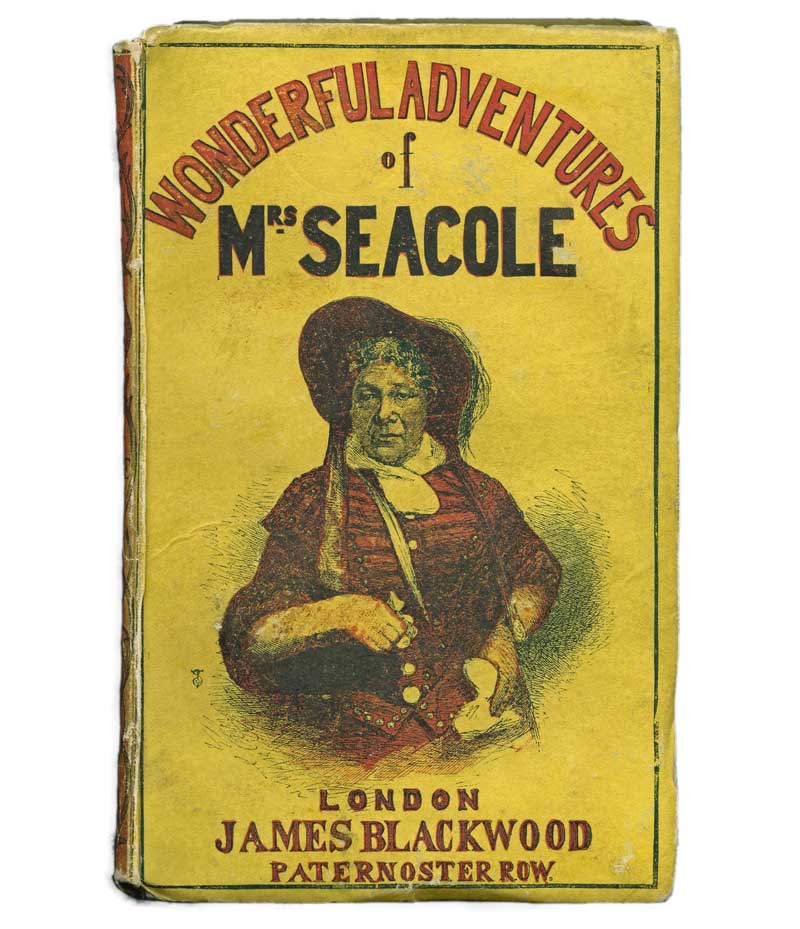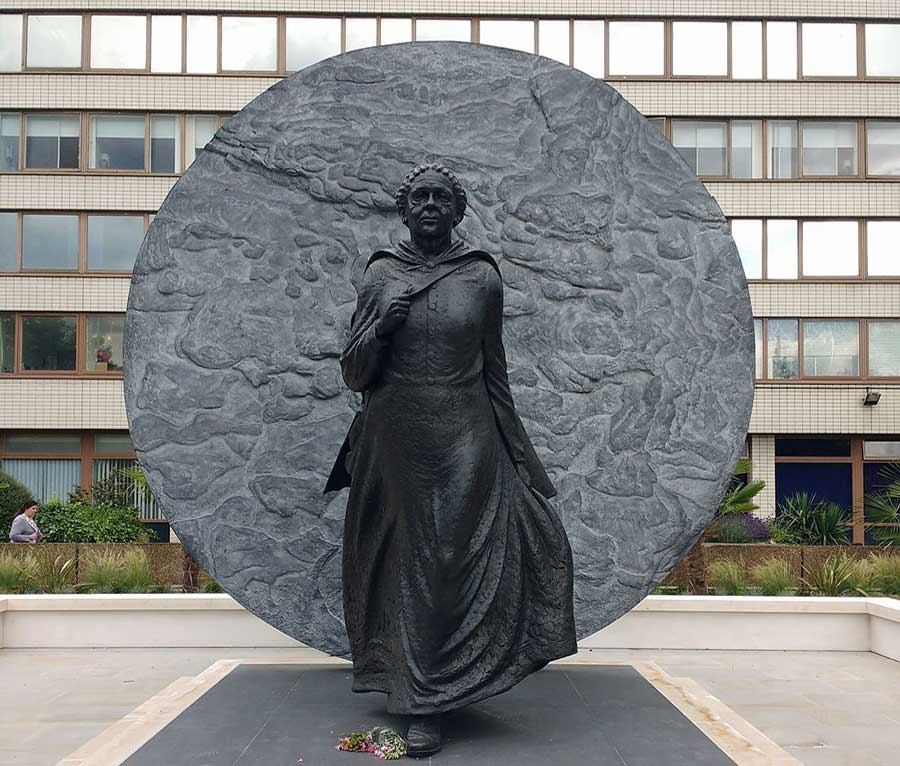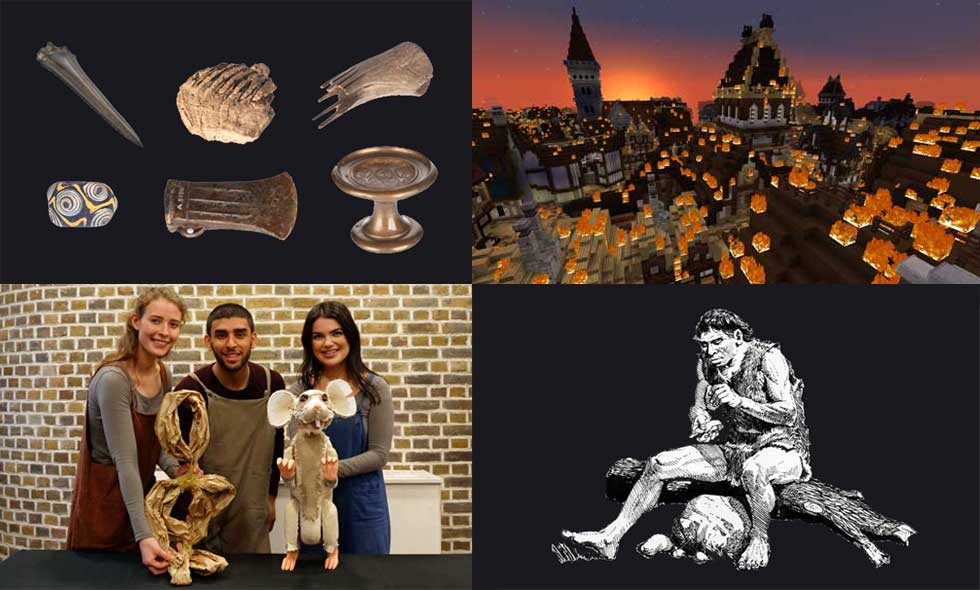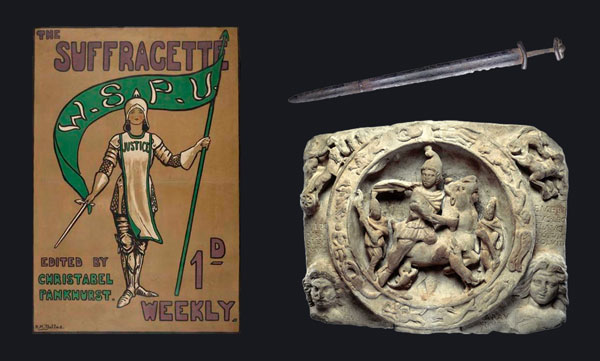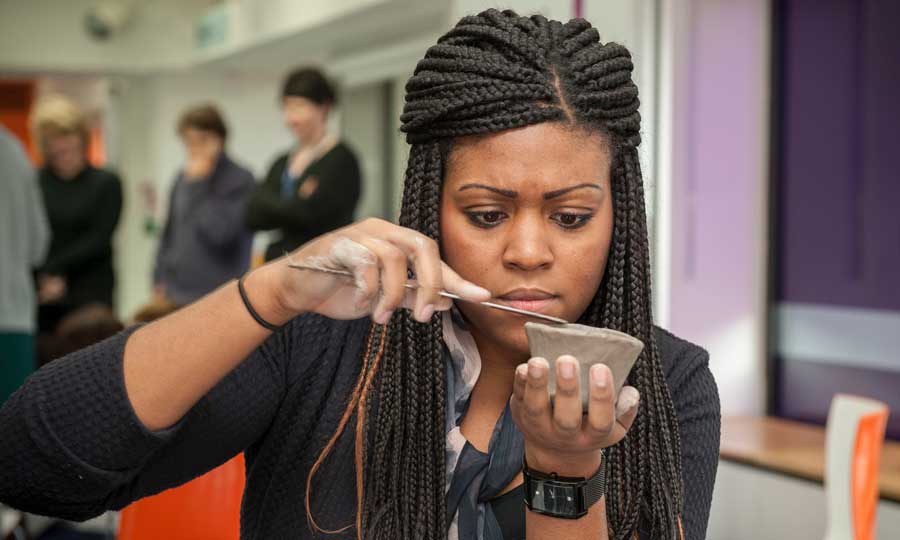Meet Mary Seacole
Mary Seacole was a nurse, a traveller, a businesswoman and a writer from Jamaica. Hear her life story!
[FILM BEGINS]
[♪PIANO MUSIC♪]
[00:00:00]
Hello! I wonder if you know who I am. I was born Mary Jane Grant in Kingston in the island of Jamaica in 1805. You may know me as Mary Seacole, and of my work in the Crimean War?
[00:00:07]
Being a ‘doctress’ was one of the few jobs open to black women at the time, and I was able to help my mother who was a doctress as she cared for her patients, and so I was able to learn about the sick and infirm. She used herbs and spices such as cloves, ginger, nutmeg, turmeric, as her medicine.
[00:00:38]
Eventually, I decided to travel to Cruces in Panama to visit my brother who was living there. I set up a boarding house right in the heart of the city. And then soon after that, that is when cholera struck the city. The Spanish doctor became nervous and frightened of the horrors that he saw around him. The people soon realised he was not familiar with this terrible disease and they preferred trust in me.
[00:01:09]
I returned home to Jamaica, and I was put in charge of all the medical practice: the medical provisions, the management of nurses, and the day-to-day operations of the British military camp. So it came to be I was mixing with the soldiers more than with my family and friends! And that is how I came to learn all about the Crimean War.
[00:01:33]
I realised my friends would soon be facing worse foes than yellow fever or cholera, and this took such exclusive possession of my mind that I could think of nothing else and I soon left for England. I applied to the War Office there, in their offices in London, to have an interview with the Secretary of War. He did not want to see me. So I grew tired, and I decided to change my plans. My new plan was merely to offer myself as a mere helper. I applied to an advert that was in all the national newspapers. A lady called Florence Nightingale had set up a hospital unit in the Crimea, with more nurses still to follow. I applied to her advert, and I applied to a Mrs Herbert, who was recruiting for her. She refused to see me. Mm! I wonder why...
[00:02:34]
So I decided to go and set up a hospital unit of my own, with my own money and the money of a friend of my husband, Mr Day. We set up our hospital and we called it ‘The British Hotel’. I was very busy and I was very close to the battlefront. It was as if the British army was totally unprepared for war: there was not enough food, drugs, medical provisions, equipment. The simplest remedies are always the best. The plasters and bandages are dipped in mustard. This prevents infection and heals the wound. Also, fresh air circulating around the wards. My services were in such great demand that I scarcely knew what it was to have two hours' rest.
[00:03:29]
Eventually, I returned home, back to London to live, but I had no more money to live on. Well, the soldiers that I had helped in the Crimea decided to throw a party for me. So I was able to live and those who I had helped had helped me.
[FILM ENDS]
An incredible life story
Mary Seacole told the story of her life in her autobiography ‘The Wonderful Adventures of Mrs Seacole in Many Lands.’ When Mary returned to England, she wrote her life story so that people would remember her and all the amazing things she had done.
If you wrote the story of your life (so far!) what achievements would you include? You could include new things you have learnt, fears you have overcome, challenges you have faced and ways you have helped others.
Look at the image of Mary Seacole on her book below. Does it give you any clues about Mary’s personality?
A medical childhood
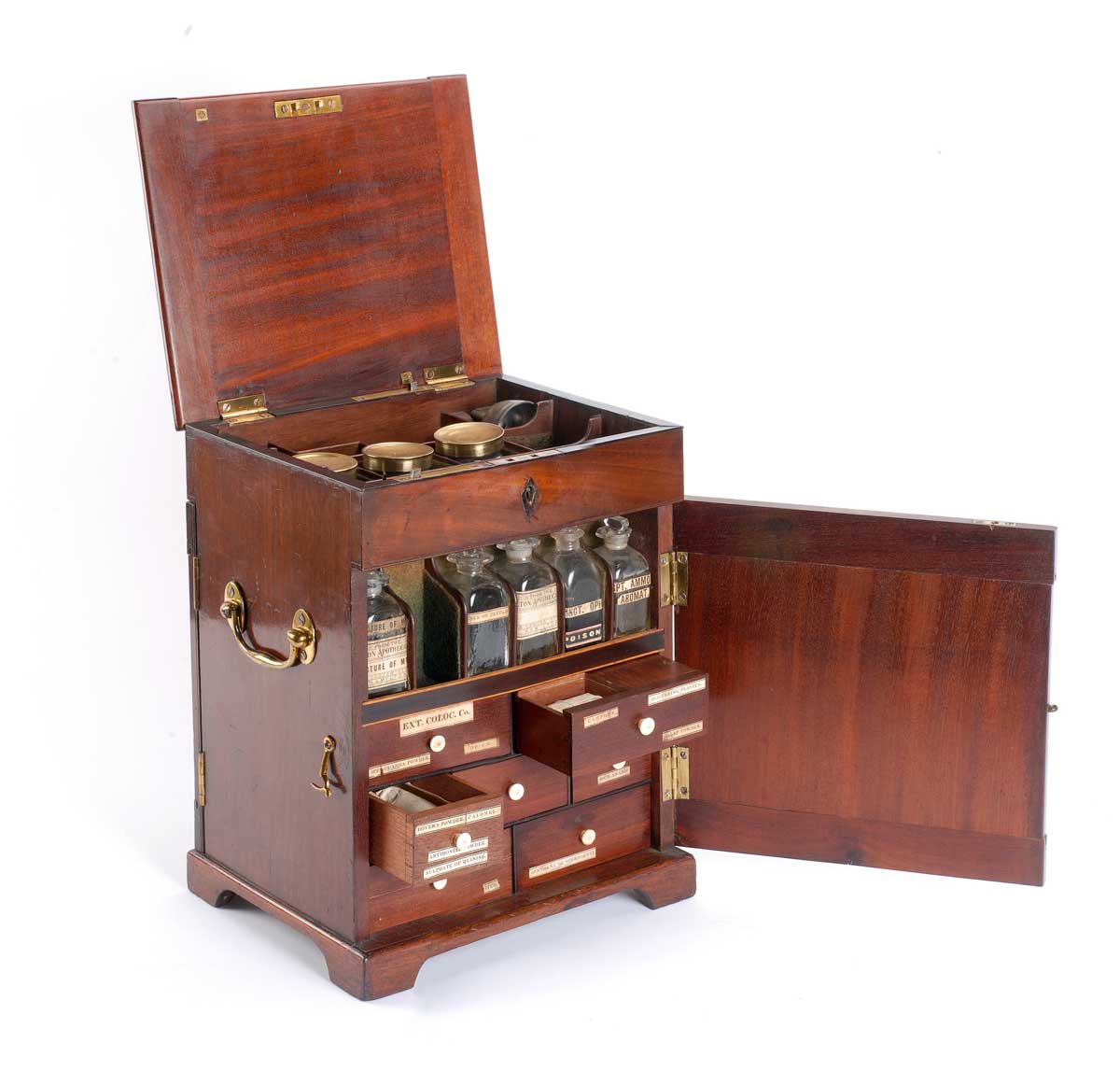
A Victorian medicine chest
Does your medicine cabinet look like this?
Born around 1805 in Kingston, Jamaica, Mary was curious about illness and healing from a very young age. Her mother was a Jamaican doctor who nursed enslaved African people and British soldiers working on the island.
Mary practised nursing skills such as dressing wounds or applying bandages on dolls and pets until she was old enough to care for people.
From the age of 12, she helped her mother at the hospital in Kingston, Jamaica.
- Have you ever looked after anyone who was sick? What skills do you need?
- Are there any special recipes in your family that people cook to help others feel better?
Natural remedies
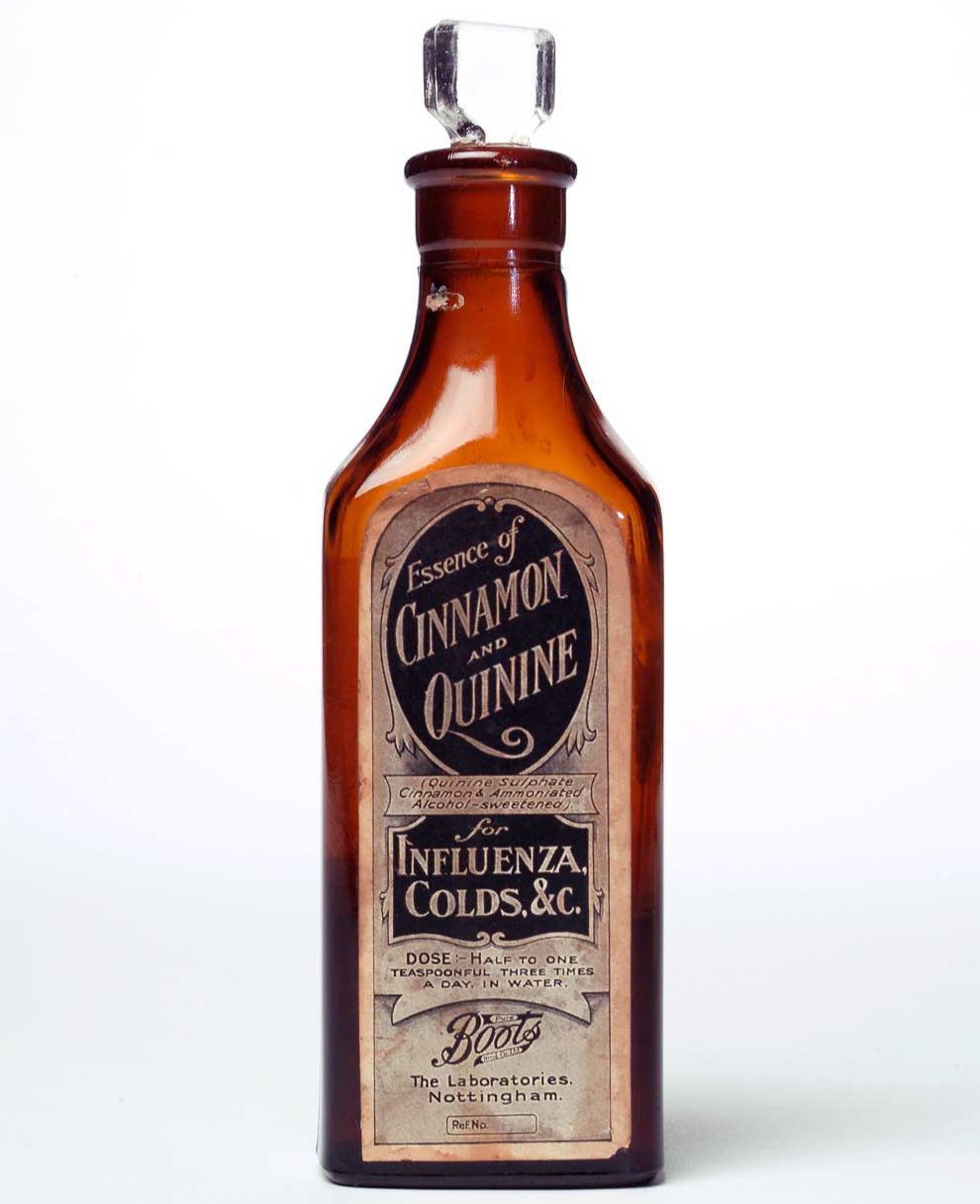
Essence of cinnamon and quinine
What do you use to treat a cold?
In the 1800s, diseases like cholera, typhoid, tuberculosis, and malaria made people very ill. When yellow fever broke out in Kingston, Mary worked with her mother using traditional Jamaican remedies to help the sick.
The remedies that Mary used to cure people were natural: plants, herbs and spices. For example, she used mustard to disinfect wounds.
- Do you use any home remedies when you are ill – like lemon and honey for a cold?
Courage on the front lines
As an adult, Mary travelled far from her home to tend to sick people: she worked in Panama in Central America, taking care of people who were suffering from cholera. Mary even went to the Crimea to treat the British and Russian soldiers fighting a war there.
First she applied to work with Florence Nightingale. Mary described this experience in her book:
Feeling that I was one of the very women they most wanted, experienced and fond of the work, I jumped at once to the conclusion that they would gladly enrol me in their number …
Many a long hour did I wait in his great hall, while scores passed in and out; many of them looking curiously at me … marvel[ling] exceedingly at the yellow woman whom no excuses could get rid of, nor impertinence dismay, and showed me very clearly that they resented my persisting in remaining there …
At last I gave that up, after a message … that the full complement of nurses had been secured, and that my offer could not be entertained. Once again I tried, and had an interview this time with one of Miss Nightingale's companions. She gave me the same reply, and I read in her face the fact, that had there been a vacancy, I should not have been chosen to fill it.
After being denied the chance to work with Florence Nightingale, perhaps because of her race, Mary used her own money to set up the ‘British Hotel’ – her very own hospital on the front line.
- What personal qualities do you think Mary needed to keep going and set up her own hospital?
Mary's legacy
After the Crimean War, Mary returned to London with very little money and in poor health. Her situation was written about in the newspapers, and many soldiers donated money to help support her. She spent the last 20 years of her life between London and Jamaica, and was buried in Kensal Green, London.
It took many years for Mary to receive the recognition for her work that she deserved. You can now see a statue of Mary Seacole outside St Thomas’ Hospital in London. Many doctors and nurses talk of owing a great debt to her for her courage and determination, and her outstanding contribution to the world of medicine.








